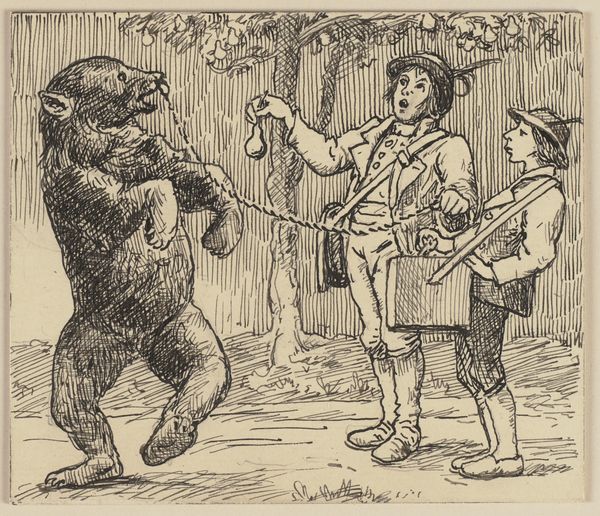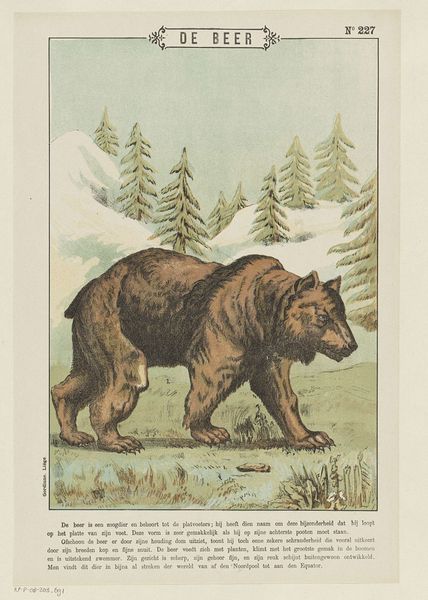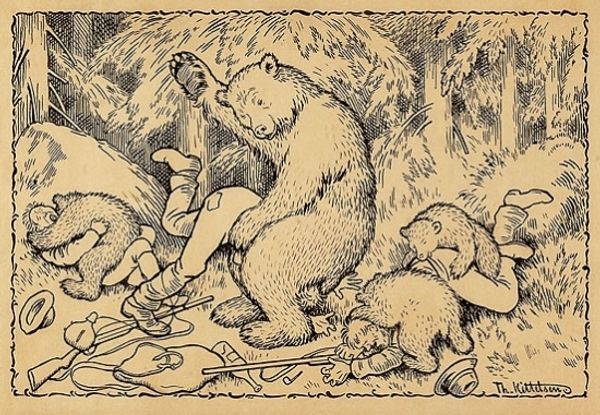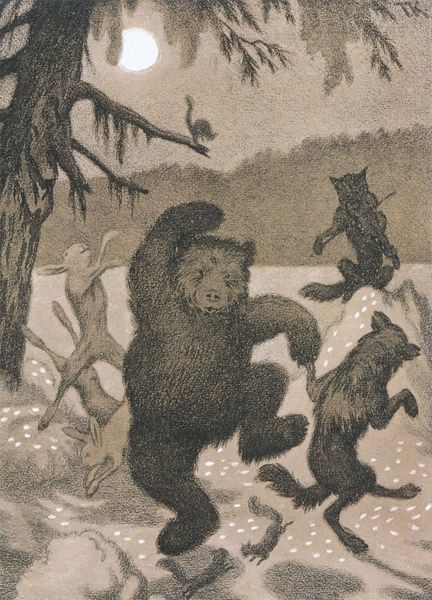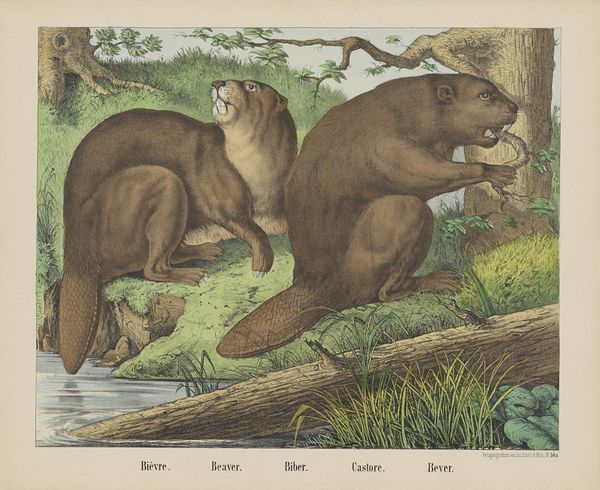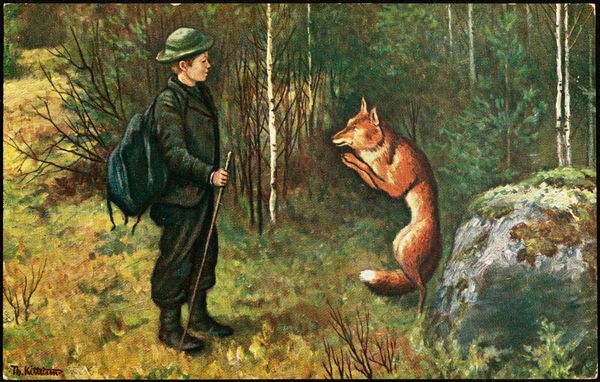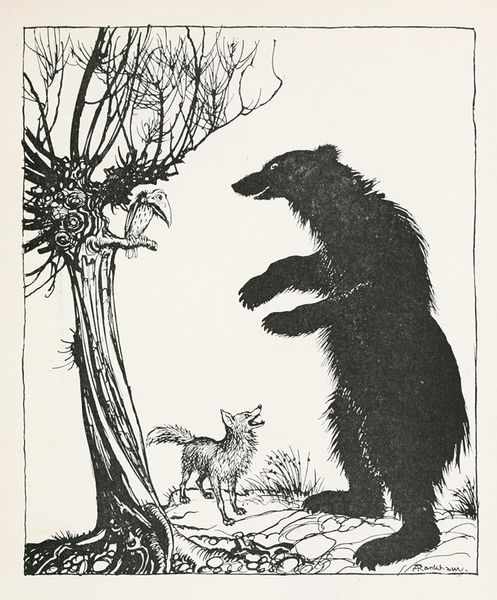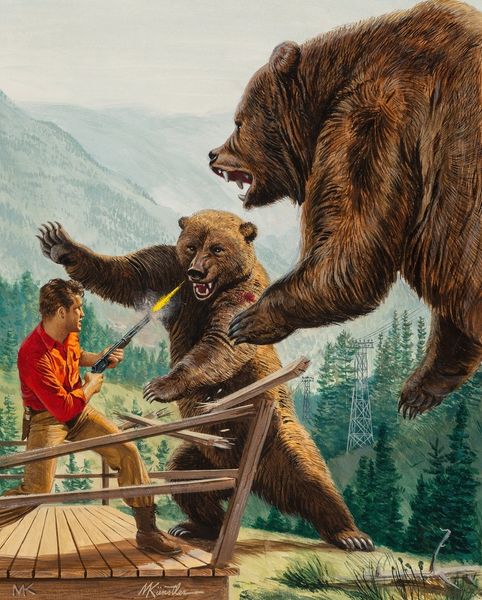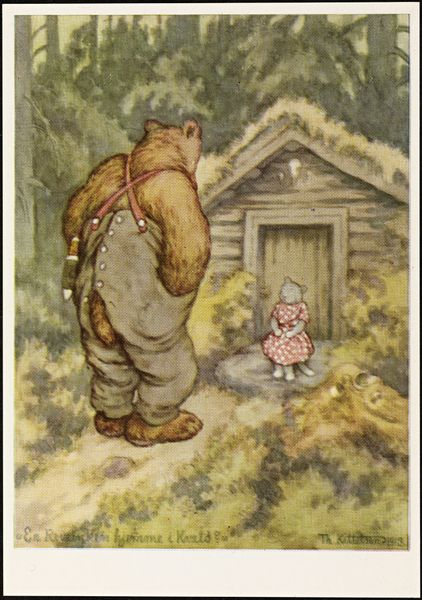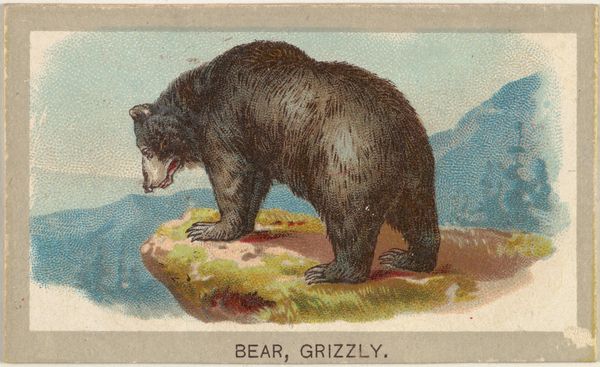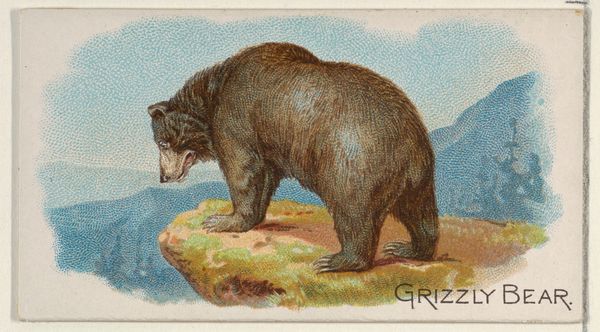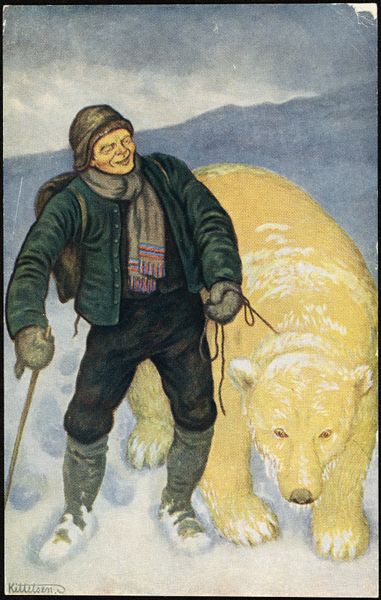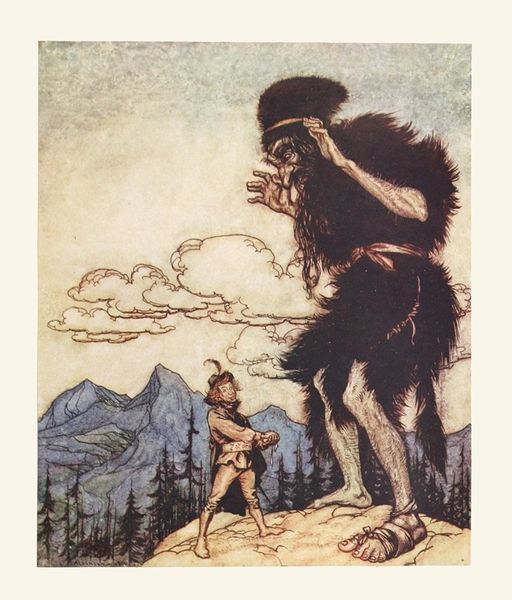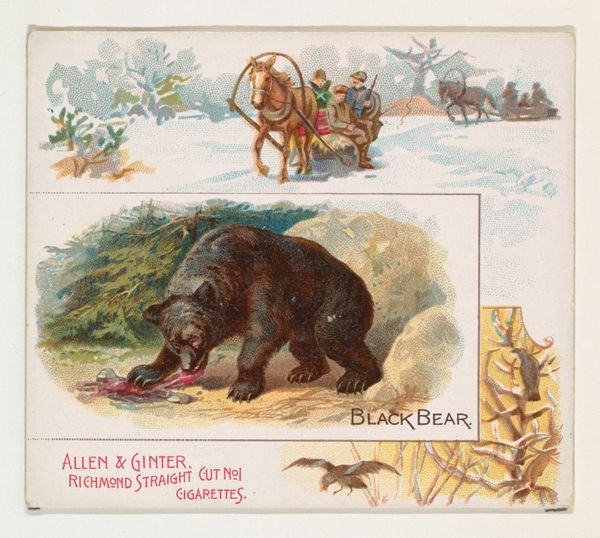
Copyright: Public domain
Editor: We’re looking at Theodor Kittelsen’s “Askeladdens Adventure,” painted around 1900 using watercolors. The tones are so soft, almost dreamy. I’m immediately drawn to the relationship between the boy and the bear – it feels very charged and intriguing. What compositional elements strike you most powerfully in this watercolor? Curator: Observe the interplay of light and shadow; it articulates the figures' forms and sets up a subtle dramatic tension. The woodland foliage acts almost as a frame, doesn't it, containing and directing our gaze toward the central pairing. How does the texture, achieved with watercolour, inform your interpretation of the depicted scene? Editor: The fluidity of the watercolor definitely gives it an ethereal, folklore-like quality, almost blurring the lines between reality and fantasy. Is there significance in the use of watercolor specifically? Curator: Precisely. Watercolour's capacity for layering and blending, juxtaposed with detailed figuration, permits the construction of nuanced forms and ethereal depths. Kittelsen manipulates the medium to enhance this sense of otherworldliness, amplifying the fairy-tale resonance. Editor: That’s a fascinating perspective. It's amazing how the materials alone shape the narrative so strongly. I see how much the technical elements and structure can amplify an image’s core impact. Curator: Precisely. Studying the structure informs our experience. A rewarding endeavour!
Comments
No comments
Be the first to comment and join the conversation on the ultimate creative platform.
